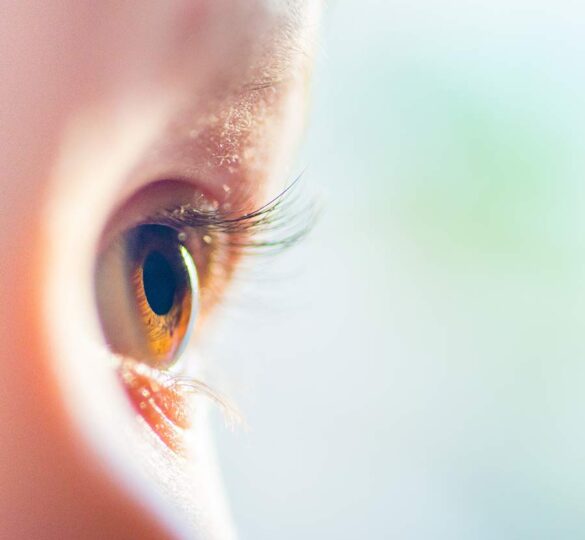Surgical Treatments for Pediatric Glaucoma
While there are both medical and surgical treatments for pediatric glaucoma, surgery remains the mainstay of therapy for primary infantile glaucoma as well as many other forms of glaucoma in children.

The aim of pediatric glaucoma surgery is to reduce intraocular pressure (IOP) either by increasing the outflow of fluid from the eye or decreasing the production of fluid within the eye. In either case, the goal is to reach a state of equilibrium where the eye will produce enough fluid to maintain its integrity yet allow enough fluid to exit to provide a normal IOP.
Correcting for Abnormal Anatomy
Increasing the outflow of fluid can be achieved by correcting an abnormal anatomical structure of the eye or by providing an alternative method for fluid to leave the eye, thus eliminating the need for a normal ocular drainage system. In primary infantile glaucoma the drainage structures within the eye are abnormal–the anterior chamber “angle” where fluid begins to leave the eye is dysfunctional. The two surgical procedures used to correct this abnormal anatomy are goniotomy and trabeculotomy.
With a goniotomy, a surgical knife is passed across the interior of the eye and an incision is made within the anterior chamber angle to normalize the anatomy and allow proper fluid outflow. During the procedure a special lens is placed on the surface of the eye to allow the surgeon direct visualization of the interior of the eye.
However, in many cases of glaucoma in young children, the cornea may not be clear enough to allow adequate visualization required to perform a goniotomy. In these cases, a trabeculotomy may be performed from the exterior surface, thus eliminating the need for a clear cornea.
With the trabeculotomy, a specially designed instrument is used to create a communication between the interior drainage structures. The success rate of goniotomy and trabeculotomy are equivalent.
Creating a New Route for Fluid to Leave the Eye
Most other forms of glaucoma in children do not usually respond well to goniotomy or trabeculotomy. In these cases, an alternative route for fluid to leave the eye must be created. In a trabeculectomy, or glaucoma filter procedure, an opening is made within the eye that allows fluid to leave the eye and travel underneath the conjunctiva, the clear membrane that covers the surface of the eye.
Because children tend to heal well, their bodies will attempt to close this new opening, which will cause the procedure to fail. To prevent this, a medication may be applied to the surface of the eye at the time of surgery to decrease the healing response. When the fluid leaves the eye, it will often cause a small elevation of the conjunctiva and a filtering “bleb” may be seen. This is generally indicative of a good surgical result.
If the healing tendency of the eye is too great and the trabeculectomy fails, or has a high risk of failure, the glaucoma surgeon may choose to implant a drainage device or seton. This is a tube that is inserted into the eye, which leads to a “plate” or reservoir that sits underneath the conjunctiva. Fluid flows through the tube, into the reservoir and is dispersed underneath the conjunctiva.
Reducing Fluid Production
When attempts to increase the eye’s fluid outflow fail, surgery to decrease the production of fluid within the eye is generally the next step taken to decrease IOP. Cyclodestructive procedures attempt to reduce the fluid production of the ciliary body, the portion of the eye responsible for producing fluid. Cyclodestructive procedures include cyclocryotherapy, external laser procedures and endoscopic cyclophotocoagulation (ECP).
With cyclocryotherapy, a freezing probe is applied to the outside of the eye to freeze the ciliary body and decrease fluid production. An external laser probe can be applied in similar fashion to achieve the same result. ECP utilizes a small video probe along with a laser. The probe is inserted into the eye and the surgeon can apply laser energy directly to the ciliary body. ECP has the advantage of allowing the surgeon to directly visualize the ciliary body.
These are just some of the many types of surgical treatments for children with glaucoma. The type that is right for any one child is dependent upon the type of glaucoma being treated, previously attempted procedures and the inherent risks and benefits of each specific treatment being considered.
Thanks to Scott Eric Olitsky, MD for contributing this article. Dr. Olitsky is a pediatric ophthalmologist in Kansas City, Missouri. Last reviewed on April 7, 2022